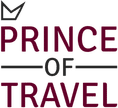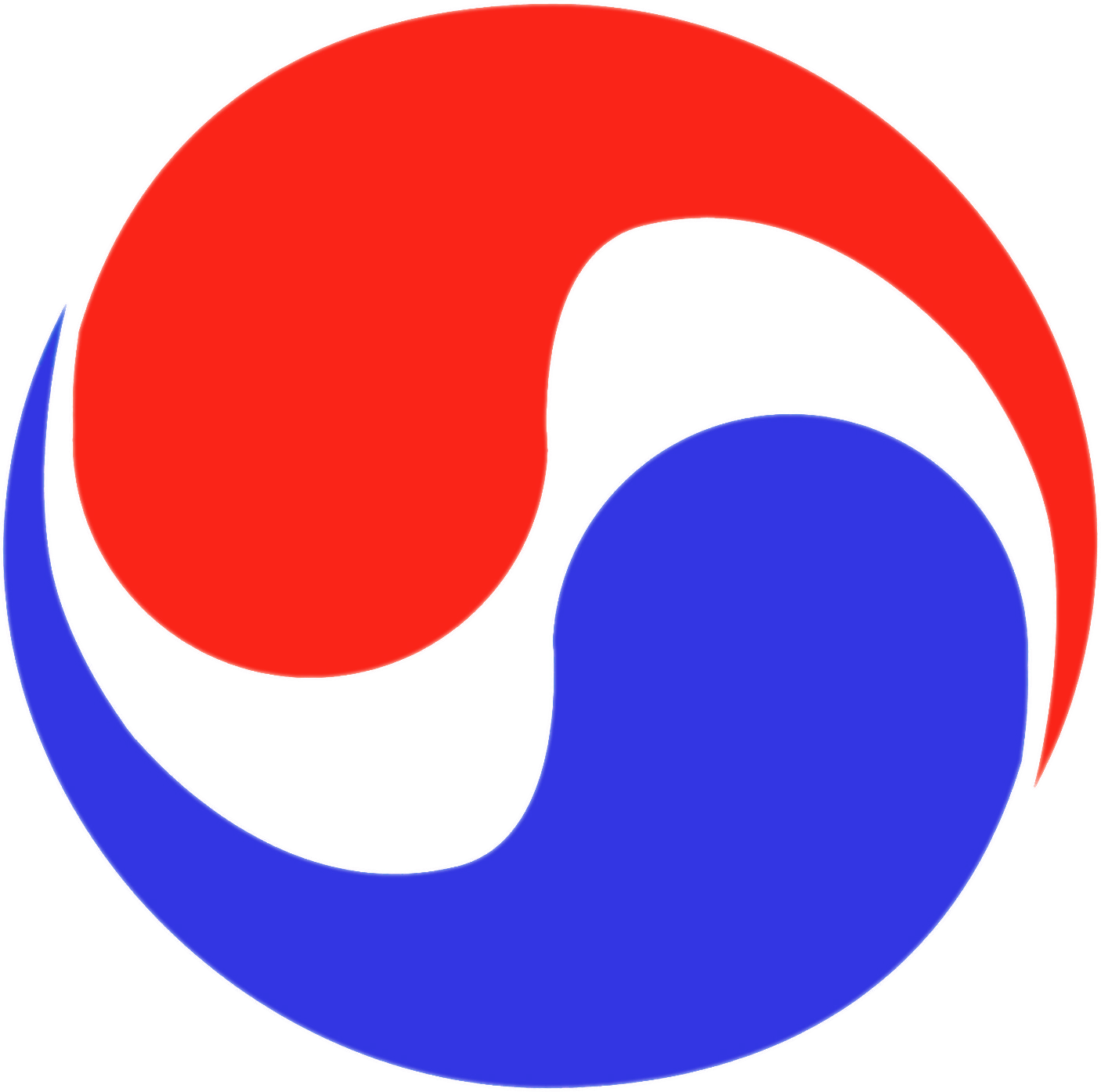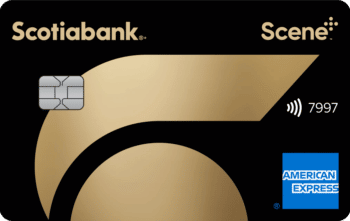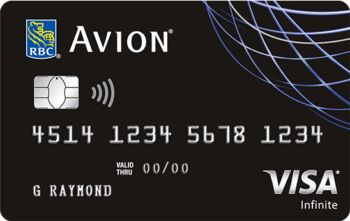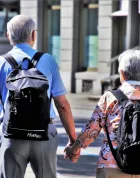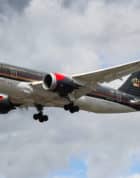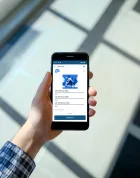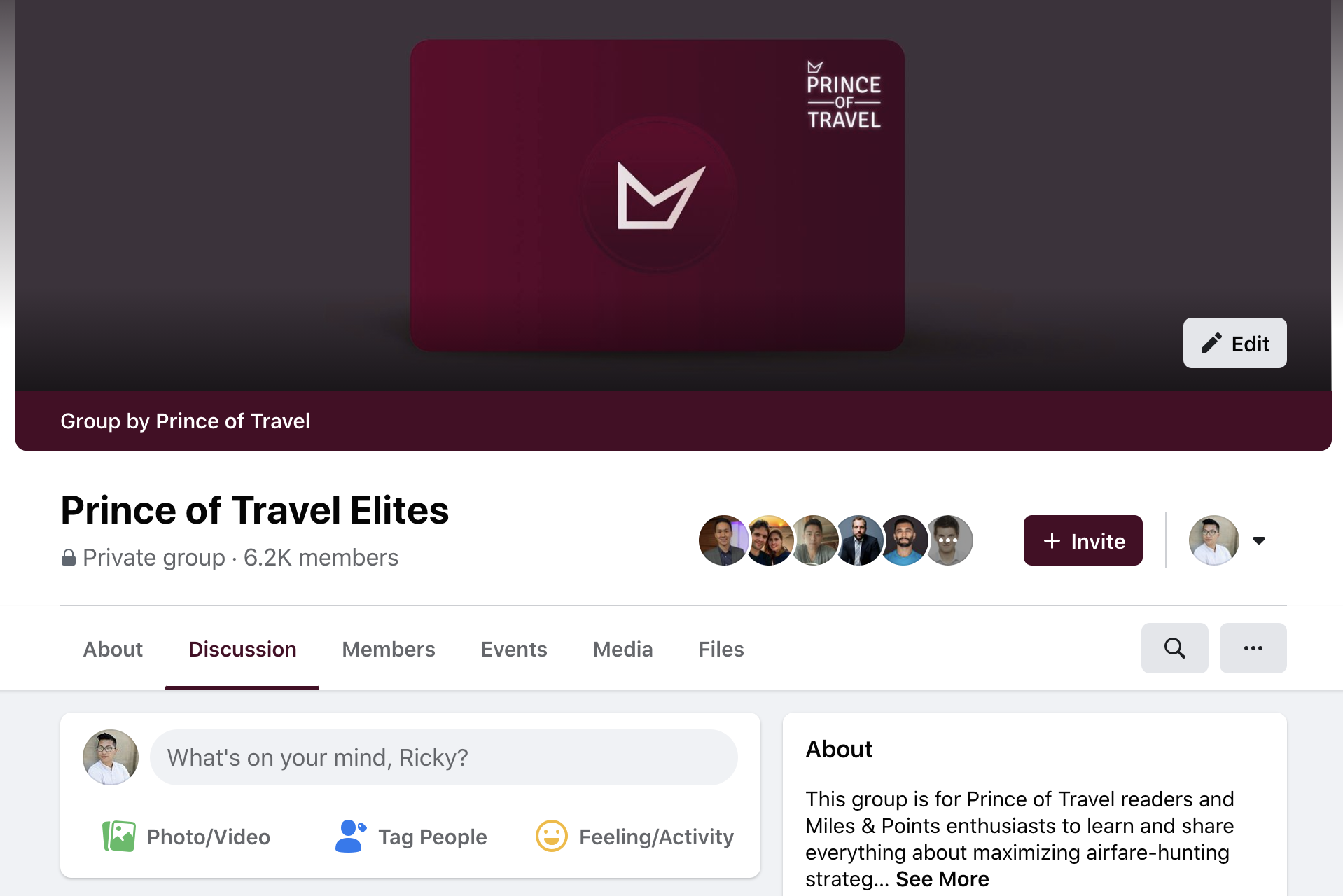Korean Air recently introduced its new business class on the Boeing 787-10 Dreamliner, and I was invited to experience it firsthand on a flight from Vancouver to Seoul.
With a sleek new seat design, upgraded technology, and thoughtful amenities, I was eager to see how it stacks up against other premium business class products.
Korean Air is known for its attention to detail and hospitality, so I was eager to put this new cabin to the test on this long-haul journey.
In This Post
Ground Experience
Before boarding, I spent some time in the SkyTeam Lounge at Vancouver International Airport (YVR). This lounge is shared among multiple airlines, but it didn’t feel overcrowded.
The highlight? A made-to-order noodle bar, serving up complimentary wonton noodles that hit the spot.
The lounge also offered an extensive buffet, comfortable workspaces, strong Wi-Fi, and plenty of power outlets—a solid place to relax before takeoff.
I managed to grab a comfortable spot by the window, catching glimpses of aircraft movement as I enjoyed my meal.
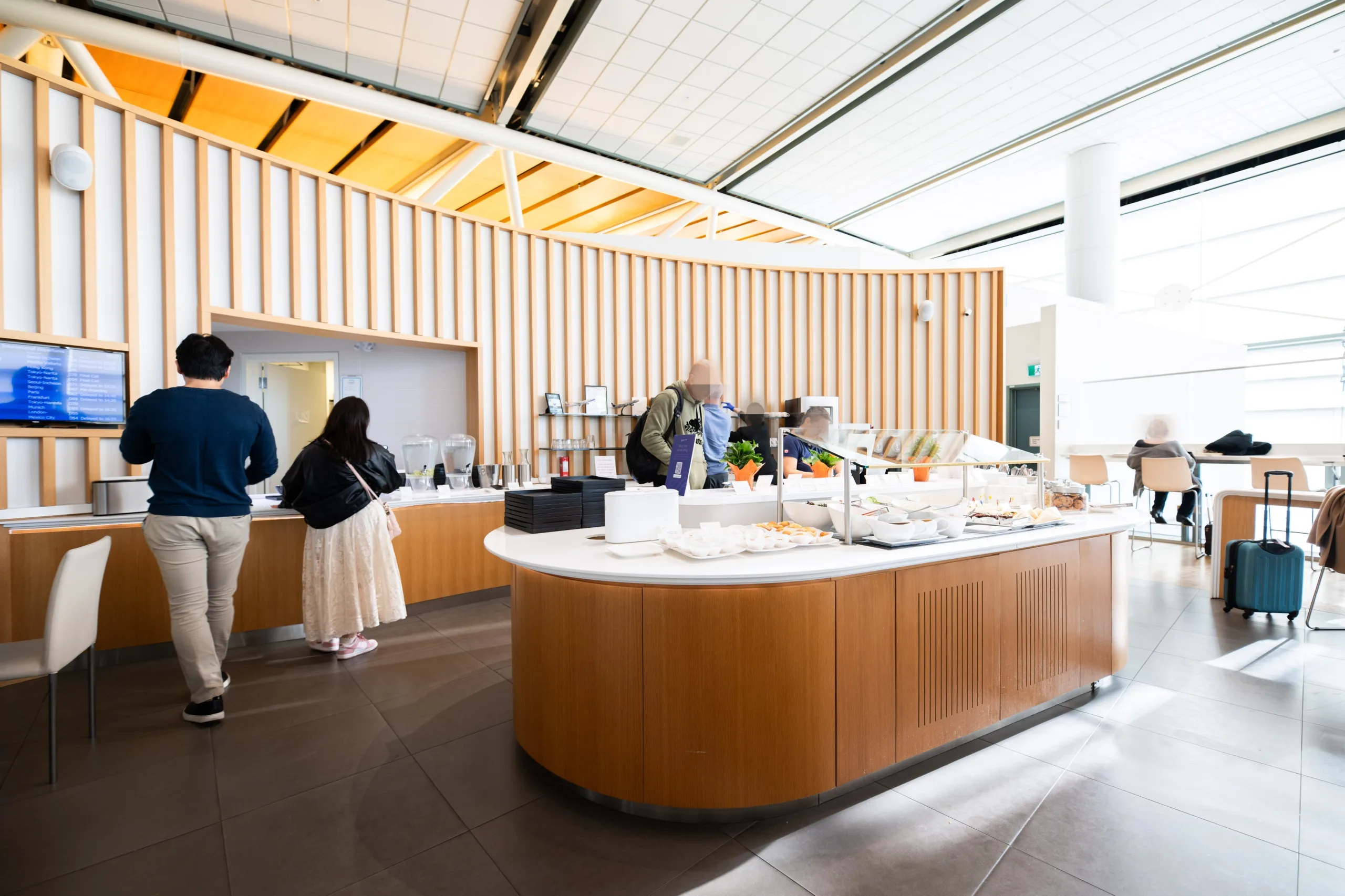
Cabin
Korean Air’s Boeing 787-10 Dreamliner features a 1-2-1 staggered configuration, ensuring direct aisle access for every seat. The cabin design is visually striking, with suede finishes, brass storage covers, and deep blue upholstery adding a touch of elegance.
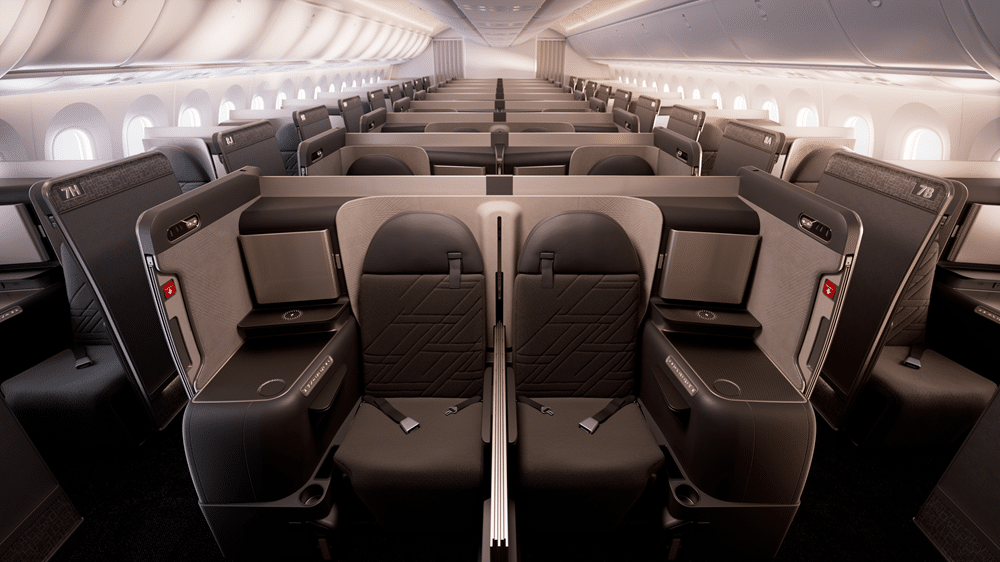
Seat
I selected seat 16B, a window seat towards the back of the cabin. The window seats alternate between being positioned directly against the window (odd-numbered rows) or slightly further away (even-numbered rows).
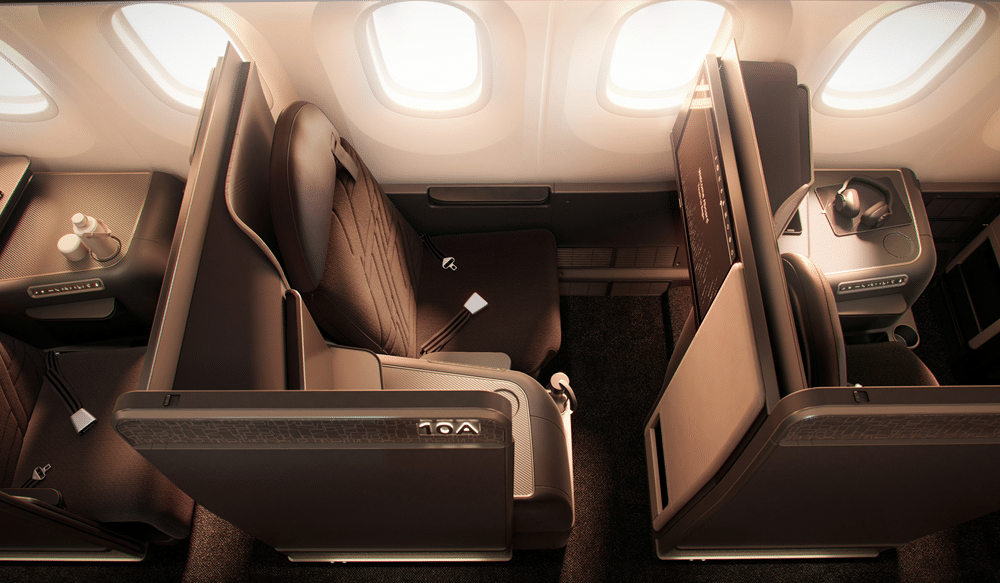
Meanwhile, the middle seats alternate between being farther apart or positioned closer together, also known as the honeymoon seats, which are ideal for couples traveling together. These middle seats come with an electronic privacy divider, allowing passengers to choose between an open or private setup.
The Collins Aerospace Horizon seat was particularly impressive, with a 78-inch bed length, a wireless charging station, and a 23.8-inch ultra-high-definition screen.
There was also a sliding door for added privacy. However, at the time of this flight, the doors were not yet functional as they were still undergoing FAA certification.
The seat controls were intuitive, allowing for easy adjustments, while the elegant brass storage cover and suede finishes enhanced the cabin’s premium feel. One of the standout design choices was the uniquely crafted fold-out tray table, which smoothly popped out with a push of a button and folded into place.
I appreciated how Bluetooth connectivity was integrated, allowing me to pair my wireless headphones seamlessly without needing an adapter.
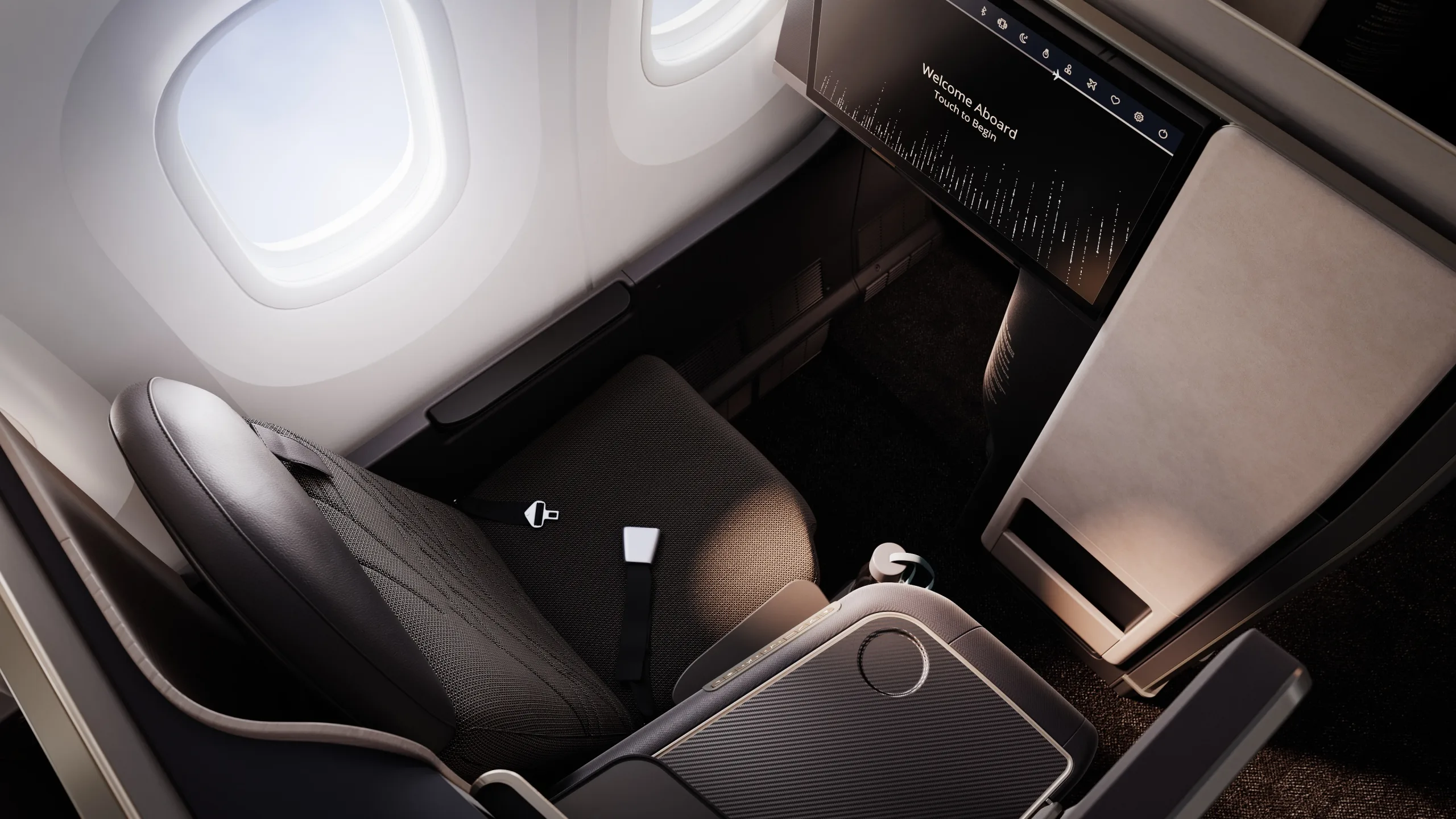
Storage was another well-thought-out feature in this seat. A dedicated storage unit, located within the seat shell, provided a convenient space to stow personal belongings, from a tablet to small travel essentials.
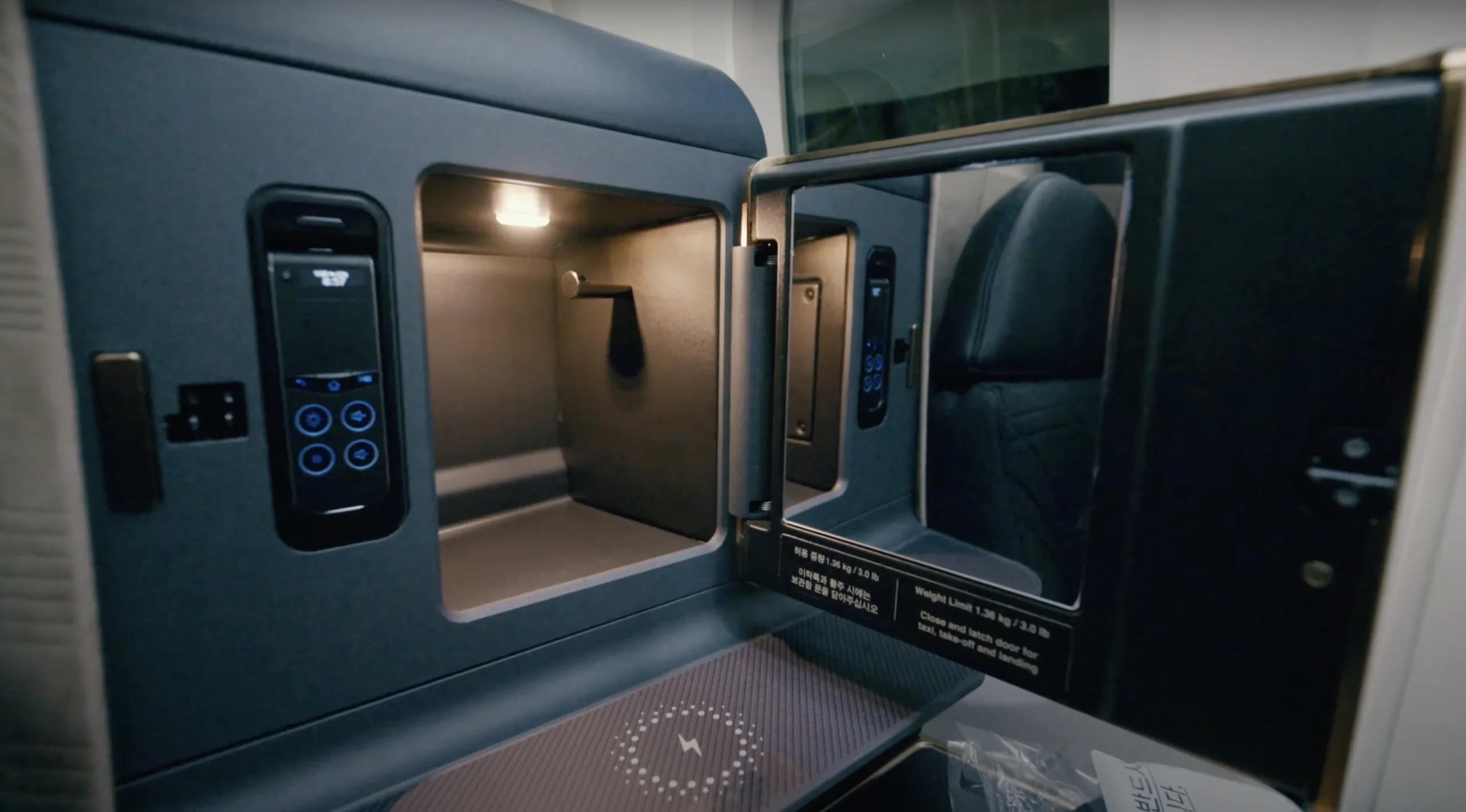
The wireless charging pad was a nice addition, eliminating the need for a charging cable, though I did notice that my phone occasionally shifted off the pad due to turbulence. This feature, combined with 60W USB-C outlets, ensured that my devices remained powered throughout the flight.
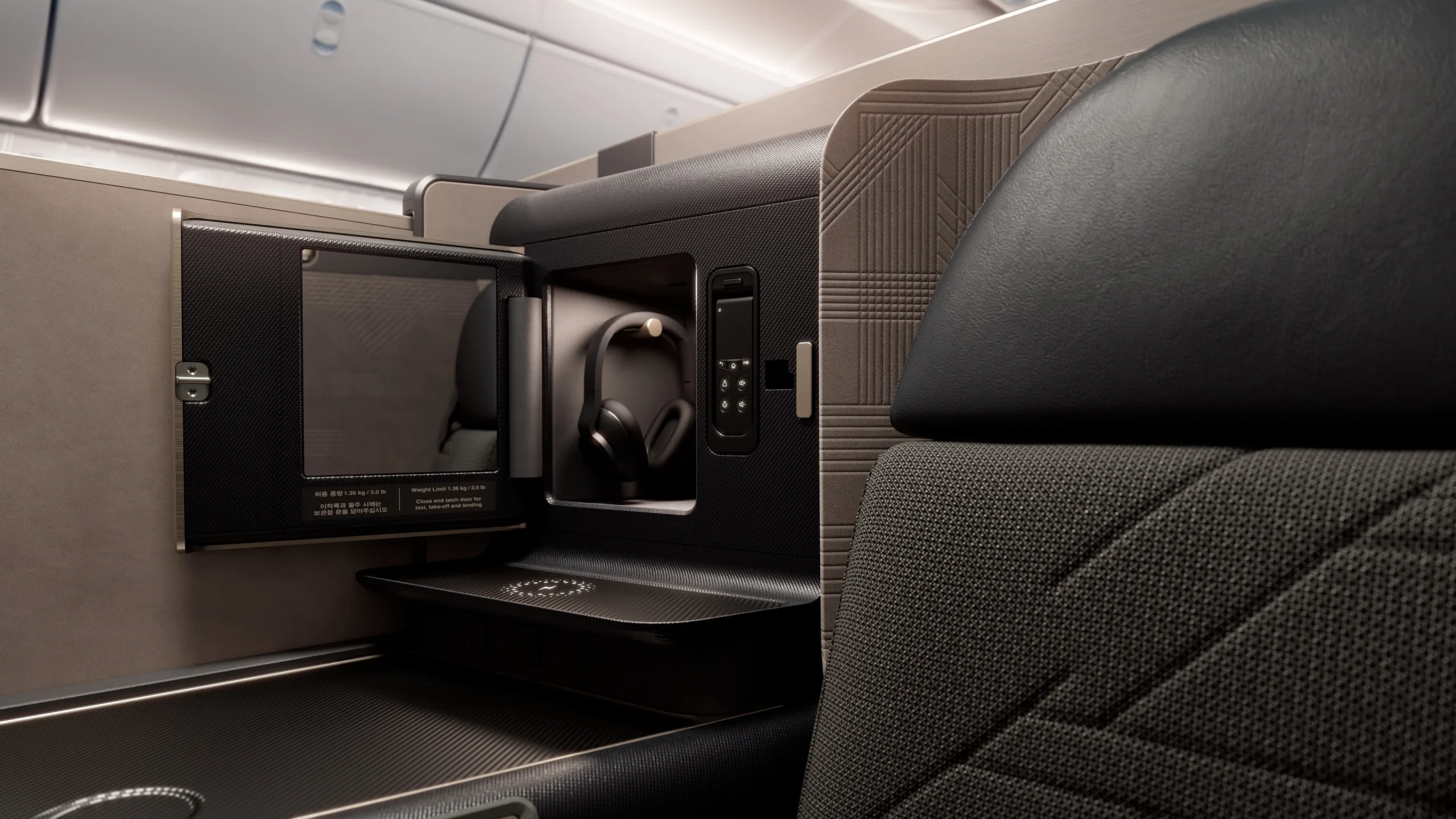
Amenities
The business class amenity kit included an eye mask, a dental kit, and a selection of Atelier Cologne skincare products, including lip balm. The inclusion of these high-quality skincare items was a nice touch, helping to keep my skin hydrated throughout the flight. The packaging felt premium, and it was evident that Korean Air had put thought into their amenity offerings.
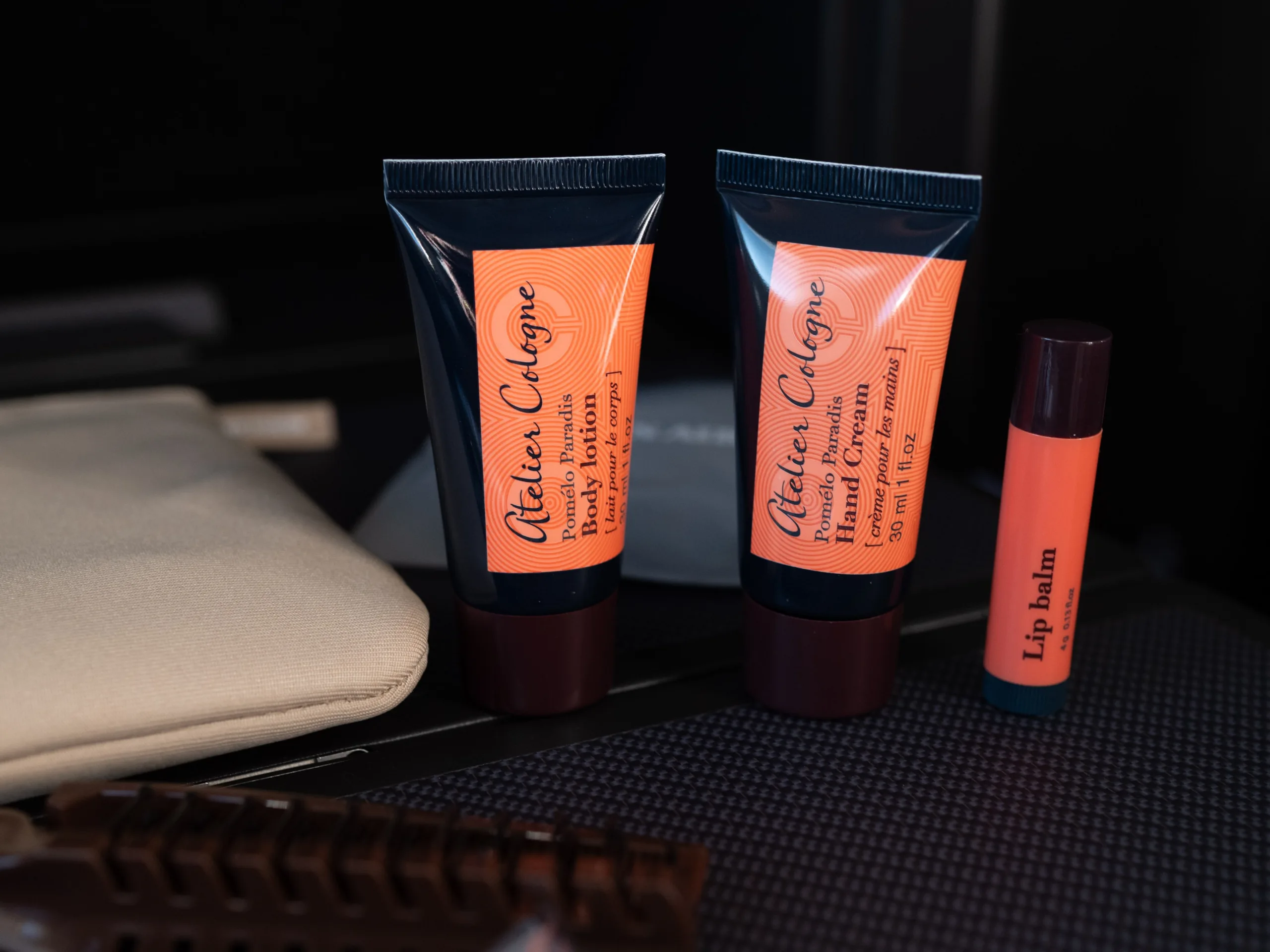
Meal
Shortly after takeoff, lunch service began with a glass of Duval-Leroy Blanc de Blancs Brut Champagne, a staple on many premium airlines in 2024. The meal started with a tuna tataki appetizer, which was fresh and flavourful.
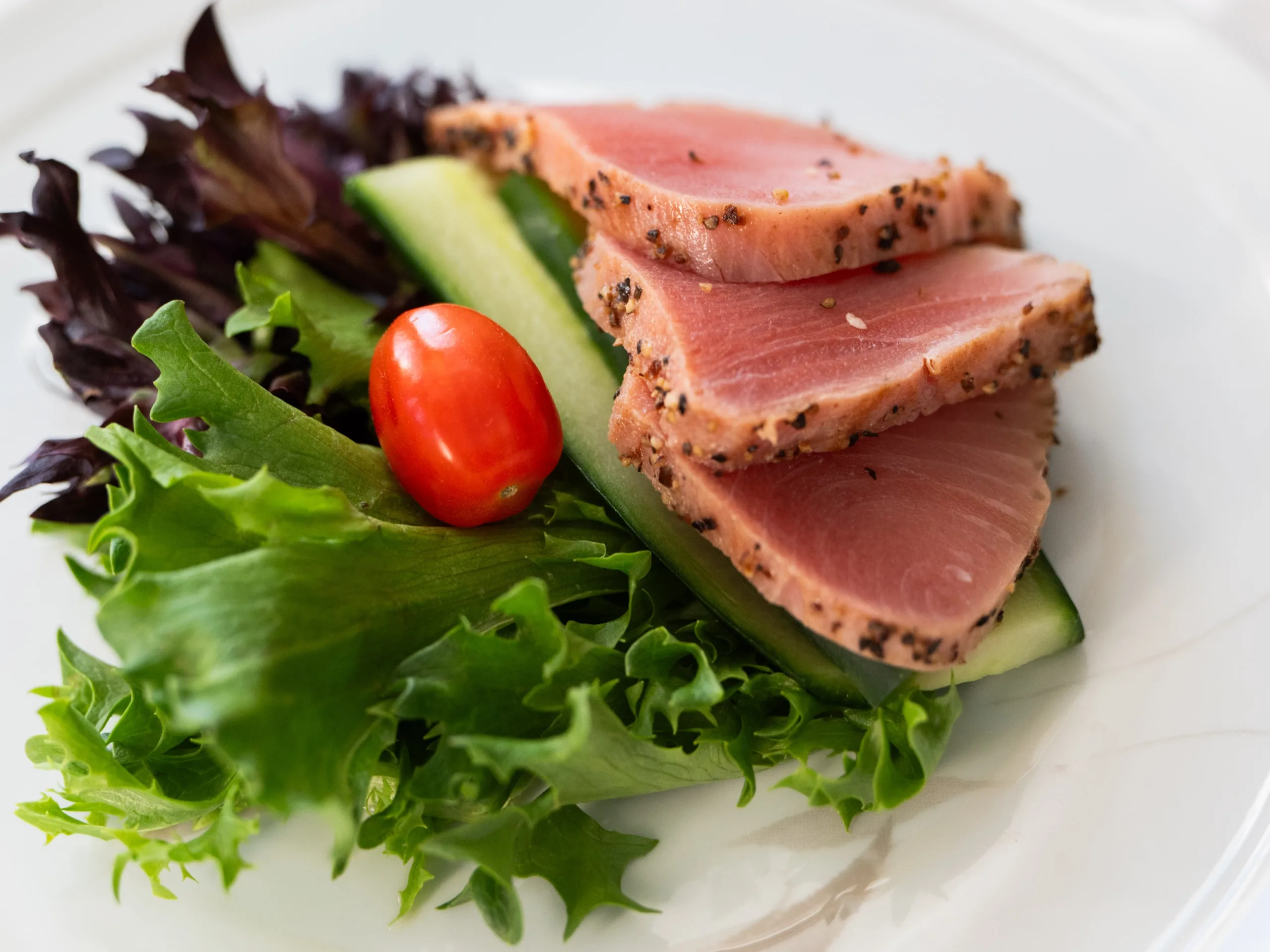
For the main course, I opted for Korean Air’s signature bibimbap, featuring perfectly tender beef, a warm and nourishing soup, spicy gochujang sauce, and seaweed on the side, making for an interactive dining experience.
Mixing the ingredients together mid-flight added an element of fun, and I found myself savouring each bite. The meal concluded with a fruit plate, cheese selection, and ice cream, which made for a refreshing and well-balanced ending.
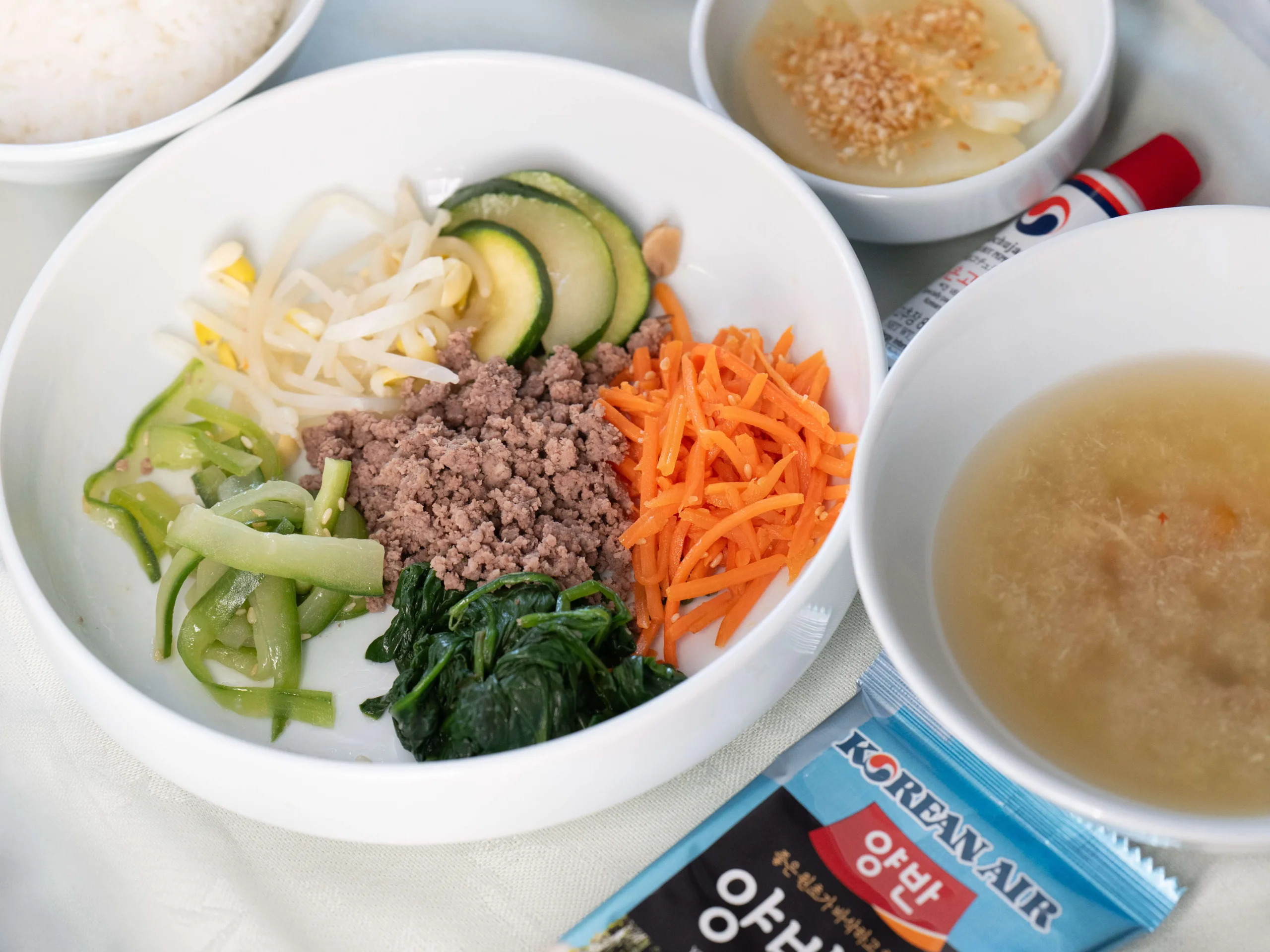
Before landing, the second meal service featured chicken with bulgogi sauce. While it was enjoyable, it didn’t quite match the excellence of the bibimbap. Nonetheless, it was a well-prepared and hearty dish that kept me satisfied until I reached Seoul. The overall meal service felt well-paced, and I appreciated the attentive refills of my drink throughout the flight.
Snack Service
A few hours into the flight, I opted for a bowl of Shin Ramen, a simple yet deeply satisfying snack. The rich broth and perfectly chewy noodles made for the perfect mid-flight pick-me-up, adding just the right amount of spice to keep me refreshed and awake.
While it wasn’t anything extravagant, there’s something uniquely comforting about enjoying a hot bowl of ramen in the middle of a long-haul flight, and Korean Air delivered on this classic favorite. It was a great way to keep hunger at bay before the second meal service.
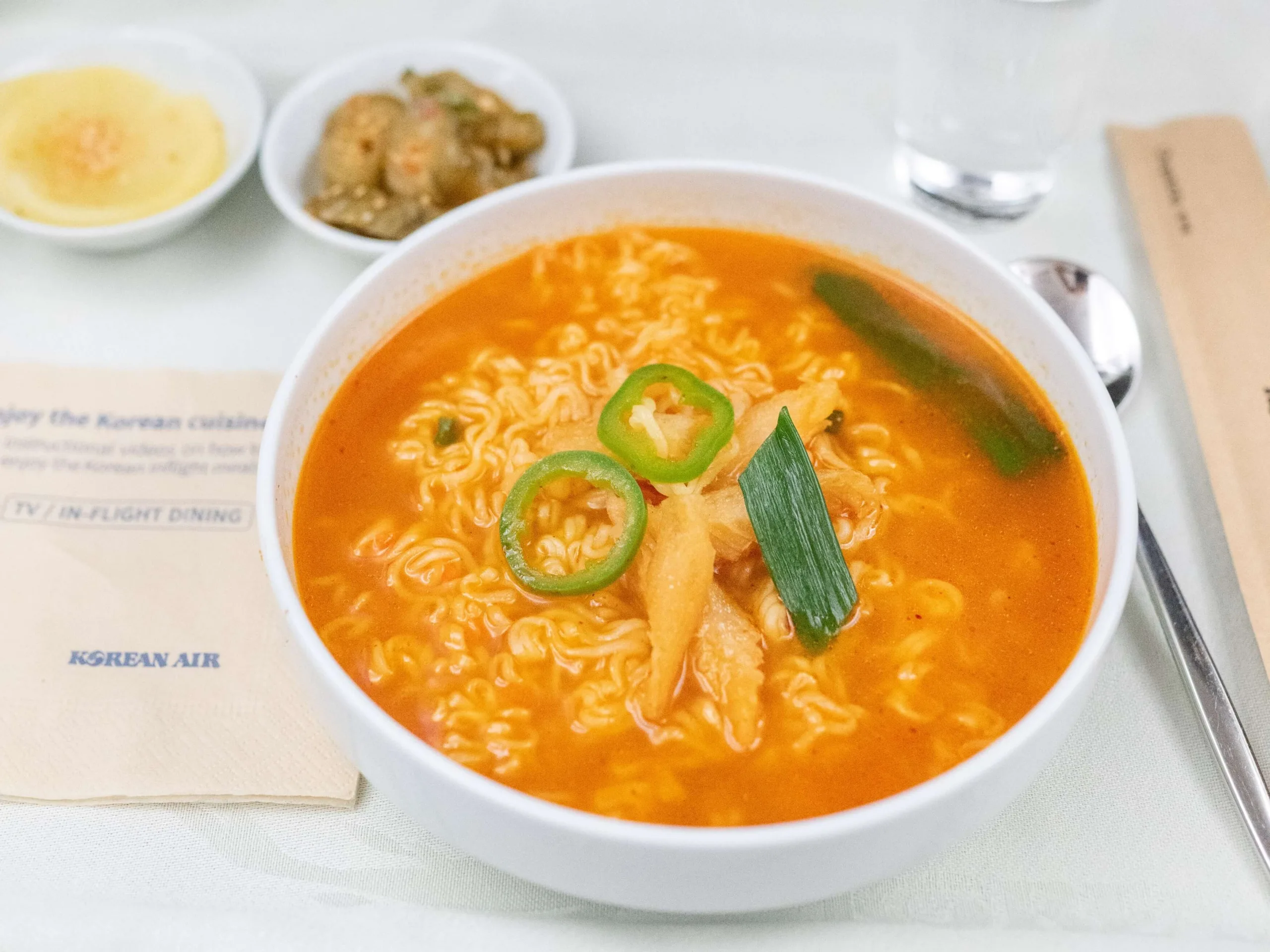
Bed
When it was time to rest, the seat transformed into a fully flat bed with a 78-inch length.
The bedding included a thick wool-like blanket and a comfortable pillow, though a mattress pad was not provided. While the sleep experience was comfortable, the cabin temperature leaned on the warm side, and the lack of individual air vents made it a bit difficult to regulate personal airflow.
One standout feature of Korean Air’s business class is that the middle seats can be converted into a double bed, making it a great option for couples traveling together. The crew can lower the center divider, allowing passengers in these seats to sleep side by side—a rare and impressive perk for business class, providing plenty of space to stretch out.
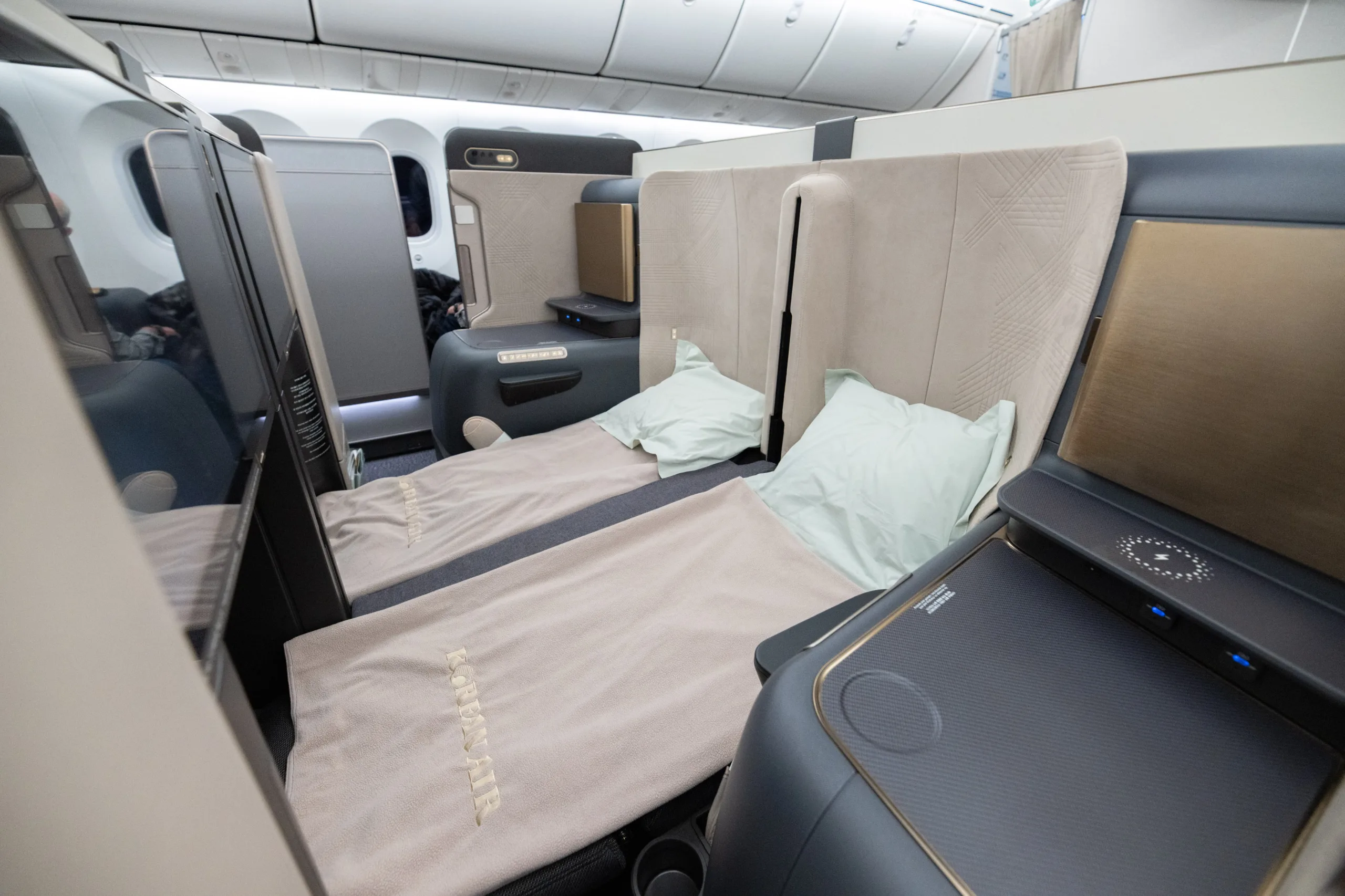
Wi-Fi
The Viasat Wi-Fi was available for purchase, though speeds were noticeably unreliable over the Pacific. While it was sufficient for basic browsing and messaging, streaming or heavy work tasks proved to be a challenge.
I wish they offered a free messaging plan like Air Canada does, since text messages don’t take up much data and it provides a great value of being connected to family and friends during flight.

Entertainment
The in-flight entertainment system was well-designed, featuring a 23.8-inch ultra-high-definition screen with a broad selection of movies, TV shows, music, and magazines. The extensive library catered to a variety of tastes, ensuring there was something for everyone.
Bluetooth connectivity made it easy to pair wireless headphones, a small but much-appreciated feature that added convenience to the in-flight experience. Additionally, the intuitive interface and responsive touchscreen made navigating through the entertainment options seamless.
Conclusion
Would I recommend Korean Air’s new business class on the Boeing 787-10? Absolutely.
The Collins Aerospace Horizon seat is a fantastic upgrade, the bibimbap meal is a must-try, and the double-bed option for couples is a fun bonus. The thoughtful seat design and modern tech features make for a highly comfortable journey, and the inflight catering does a great job of showcasing Korean flavors.
However, there are areas for improvement. The cabin temperature ran warm, and Wi-Fi speeds over the Pacific were slow, limiting connectivity. While service was professional, it lacked the warmth and attentiveness seen on other leading airlines.
Overall, this is still one of the best ways to fly from Vancouver to Seoul, and with Korean Air’s upcoming merger with Asiana Airlines, I’m optimistic that the airline will continue refining and enhancing its business class experience in the years ahead.

